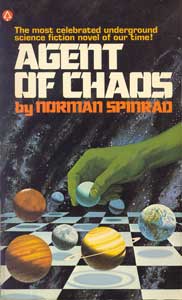Fearless
 Fearless is a pretty good movie that has unfulfilled ambitions of greatness. The movie is based on the real life figure of Huo Yuanjia, a martial artist in China who founded a prestigious and international martial arts academy and captured the public imagination as an advocate for restoring national strength against Western and Japanese interests in the early 20th century. The movie incorporates elements of martial arts movies, biopics, sports films, and historical romances. These disparate styles wouldn't work together except for the unmistakable star power of Jet Li as Huo – easily his most appealing and intimate performance since 1994's Fist of Legend.
Fearless is a pretty good movie that has unfulfilled ambitions of greatness. The movie is based on the real life figure of Huo Yuanjia, a martial artist in China who founded a prestigious and international martial arts academy and captured the public imagination as an advocate for restoring national strength against Western and Japanese interests in the early 20th century. The movie incorporates elements of martial arts movies, biopics, sports films, and historical romances. These disparate styles wouldn't work together except for the unmistakable star power of Jet Li as Huo – easily his most appealing and intimate performance since 1994's Fist of Legend.The story is broken down into three, clearly-identifiable acts in the traditional bildungsroman structure. In act one, Huo is the son of a martial arts instructor who spreads the reputation of his school through public matches in the town square. When Huo's father loses, Huo makes a personal commitment to become the champion fighter of the province. He fights fiercely, with reckless abandon and easily becomes famous throughout the land. A feud with a rival school escalates into tragedy, though, and the conflict ends with the rival master and Huo's family dead. In act two, Huo flees to the countryside and live in self-exile with a rice-farming peasant community for several years. His return to a simple and traditional lifestyle enlightens Huo about the need to restore pride in Chinese identity and to foster brotherhood rather than rivalry. Act three brings Huo back to the big cities of China where he becomes an outspoken figure in national pride. The markets are full of foreign investors who compare China's weak national markets to a physical infirmity. Huo fights foreign challengers in the boxing ring to demonstrate the strength of the Chinese. The movie's climactic finale takes place at a rigged tournament where Huo succeeds in establishing national pride in Chinese identity, but loses his life through treachery.
Although Huo is a historical figure, he has the reputation of a legend, and stories of his life are hazy and contradictory. The parts of Huo's life shown in Fearless are obviously ahistorical (for example, Huo is presented as childless after act one, but the real man was survived by several children) and gives the movie a feeling of being a tall tale. This impression is only further served by the physics-defying fights, choreographed by the great Yuen Woping. The dizzying wire-work creates unbelievable stunts that undermine the historical significance of the story.
While the second act is the beautiful soul of the film, it is also dishonest in its presentation of the rural utopian village. The peasants are always healthy and clean, the crops never fail, there is always enough food, and the beautiful and kind blind girl who loves Huo always has an apropos proverb to demonstrate their simple, traditional Chinese wisdom. The nationalism is so strong that there isn't a single white character in the whole of the movie who isn't portrayed as a grunting, dishonorable brute. A Japanese judo master is the lone foreigner presented with any sympathy.
In its rush to become a historical epic, the film also loses track of its most important relationship, that of Huo and his childhood friend Nong Jinsun. Huo's jock attitude and Nong's bookish responsibility develop into an unlikely friendship. By the end of the brisk and moving first act their friendship is rendered almost certainly irreparable by Huo's selfish actions. In the third act, however, poor Nong is relegated to sidekick status. Huo has achieved enlightenment on his own and only needs Nong's finances as startup funds for his academy.
As a martial arts film, it delivers the goods, perhaps to excess. But as a historical epic, it's unwillingness to play fair with facts and all-too willingness to uncritically celebrate Chinese values and demonize foreigners limits its importance. I was struck with a great sadness throughout the whole movie at how Jet Li, so charismatic in Fearless, has been misused as a dramatic actor in the past decade. The film's problems aside, it is truly a joy to watch one of the world's great international film stars at the top of his game.






